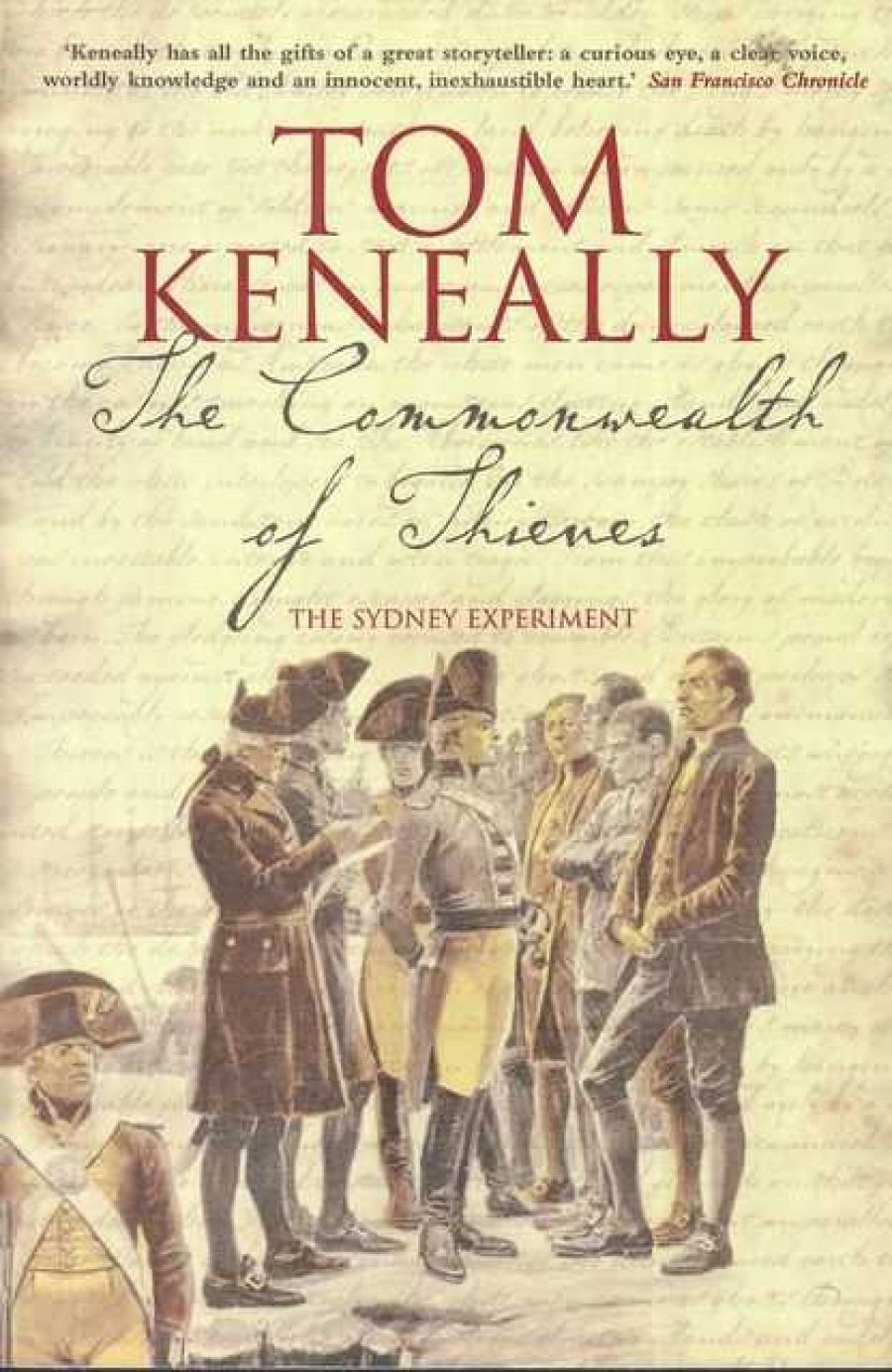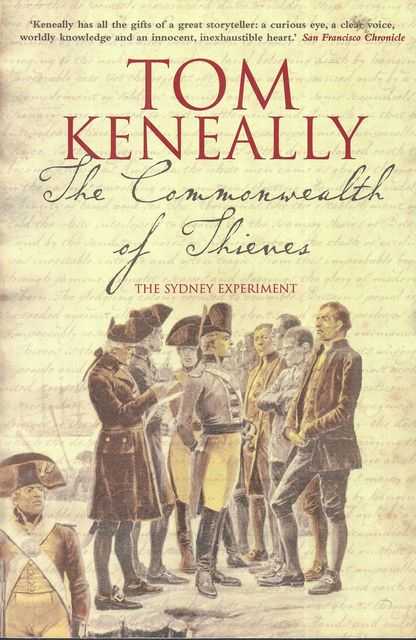
- Free Article: No
- Contents Category: Australian Fiction
- Review Article: Yes
- Article Title: Occupied territory
- Online Only: No
- Custom Highlight Text:
Pity the professional historian. It is hard to know where to turn these days to avoid being abused, even from the most unlikely sources. According to Andrew Riemer, writing lately in the Sydney Morning Herald, the main reason professional historians castigated Robert Hughes in 1988, when he published The Fatal Shore, was because he had ‘occupied their territory’. Is there any other professional group in Australia so childish, irresponsible, parasitical and useless as the professional historian? Judging from remarks like this, appearing weekly in the press over the last few years, apparently not. And why is it, at a time when the number of living professional historians probably outnumbers the total of their deceased predecessors since time began, we supposedly manage to work as a tiny clique? Someday an historian, maybe even a professional one, will explain this unlikely phenomenon. Allegations such as these are linked somehow with the overwhelming anti-intellectualism of early twenty-first-century Australia, but exactly why historians, among all the others, are hit so hard and so often is a puzzle.
- Book 1 Title: The Commonwealth of Thieves
- Book 1 Subtitle: The Sydney experiment
- Book 1 Biblio: Random House, $49.95 hb, 510 pp
- Book 1 Cover Small (400 x 600):

- Book 1 Cover (800 x 1200):

Riemer’s comment – startling from such a writer – accompanies a prediction that professional historians will likewise ‘complain long and loud’ about Tom Keneally’s new book, on the first settlement at Sydney Cove. Generally speaking, professional historians complain not about the invasion of their turf, as Riemer suggests, but about history writing that is widely praised and accepted as gospel while at the same time breaking the fundamental rules of the discipline. Most of us (not all) thought The Fatal Shore was bad history because Hughes was obviously unaware of the limitations of his evidence. He used his celebrity status to cloak his writing with an authority that in itself it did not possess.
Keneally’s new book is less pretentious than The Fatal Shore and, as history, more successful. His publishers might say on the cover that the book is ‘impeccably researched’. He makes no such claim himself. His footnoting, which is adequate and workmanlike, and his bibliography both make it clear that he has relied mainly on published documents and on monographs written by the much-maligned professional historians. He makes no use of articles in scholarly journals, which is certainly sometimes a pity. He could have done more, for instance, with the fascinating character of the Judge-Advocate, Richard Atkins, had he looked at some recent specialist work. Atkins, as we now understand him, fits well with Keneally’s picture of a complex intellectual and moral culture among the very first settlers at Sydney Cove. But on the whole, this hardly matters. The quantity and quality of published material now available on the period is good enough for the task Keneally has set himself. This includes a first-class website, listed in his bibliography.
There is the occasional error. ‘Sir Henry Brownhose’, a United Irishman convicted of administering an illegal oath, was really Sir Henry Brown Hayes, who abducted an heiress. And Richard Atkins was not an army surgeon. These are strange mistakes to make about well-known characters, but in a book packed with detail they amount to very little.
Early Sydney is a subject Keneally has thought about on and off for many years. I read his novel Bring Larks and Heroes when it first came out in 1967; more than any factual history of the period, its imagery stays with me. It stands as a lesson in the way fiction can sometimes say more important things about the past than more conventional history writing does. The Playmaker (1987), using similar material, was less evocative and, I think, less successful as a story. In terms of achievement, The Commonwealth of Thieves seems to fall between the two. But it also works differently from both. Not only does Keneally aim this time to stick to the facts: the span of the narrative is also far broader.
The professional historian can only be grateful for writing of this kind. In The Commonwealth of Thieves, the events of the First Fleet and of Arthur Phillip’s government are encapsulated in many small stories and character sketches. And yet a sense of vastness remains. Just as we have reason to be grateful for Keneally’s pungent grasp of detail in Bring Larks and Heroes, so I think we can only thank him now for his sweeping portrayal of the original invasion.
Like everyone else, professional historians cannot avoid the massive moral weight of the national story. But most of us adapt ourselves to its pressure without quite knowing what we are doing. It takes a real effort of imagination to reconcile raw historical detail with the spiritual issues implicit in the idea of the birth of the nation. Most of us are content to work only with small things; few have Keneally’s skill in tying the intricate to the epic.
In attempting the same task, Robert Hughes made his characters subordinate to the dark imagery he wanted to convey. Ever the art critic, each stroke of the pen reflected the form of his entire picture. The result, in the words of the London Times, was: ‘A unique phantasmagoria of crime and punishment.’ The effect in Keneally’s book is not only more accurate: it is also more humane. He leaves room for chaotic unpredictability, for genuine kindness and idealism existing side by side with their opposites.
In his book, Hughes matched the penal system with the Soviet Gulag, and Keneally, at one point, draws a line between Arthur Phillip and Nazism. It was Phillip who sent an Aboriginal skull to Joseph Banks, and Banks forwarded it to a German scholar whose theories of race later helped to legitimise the Nazi régime. And yet, Phillip’s painstaking humanity enlightens the entire book. It is Keneally’s sense of this and similar irony, his grasp of the complexity of human character and of the unpredictability of events that make such detail sit sensibly together.
One curiosity remains. Most writers long to see their names writ very large on the covers of their books. This publication takes the process a step further. Here, it’s ‘Tom’ that predominates, and it’s ‘Tom’, not ‘Keneally’, we hear of in the blurb. Why so friendly? Are we being assured that the book, though very fat, is not hard to read – that it is not the work, for instance, of a professional historian? Columnists and book-reviewers should not pander to anti-intellectual prejudice, and publishers have no business with such self-serving mateship. Keneally is one of those writers who has done brilliantly over the last few decades, not only in mediating between fiction and fact, but also in nourishing diplomatic relations between ‘the vernacular republic’ (as Les Murray called it) and the republic of letters. It’s terrible to see the latter effort disintegrating, even in the publication of his own work.


Comments powered by CComment